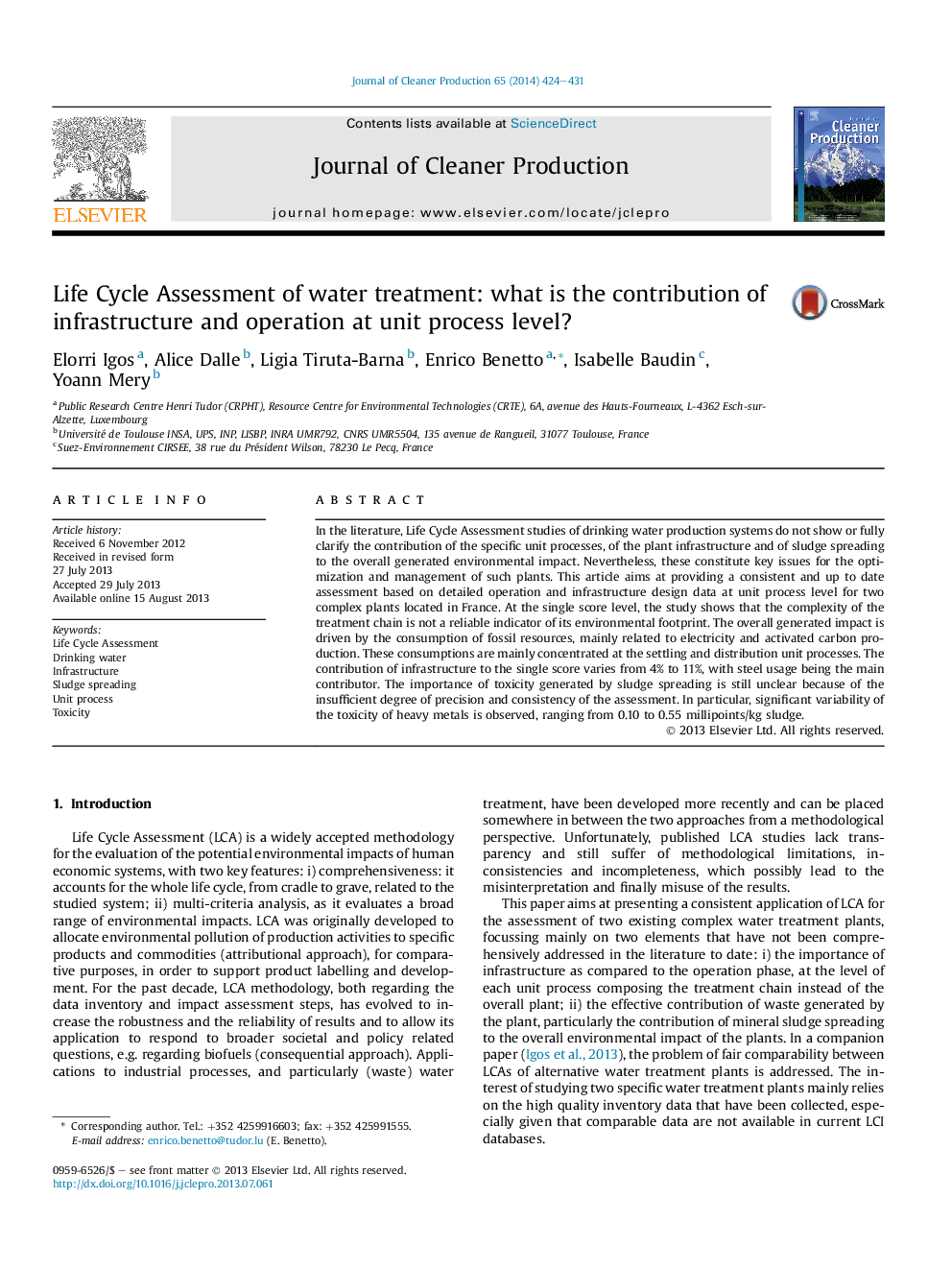| Article ID | Journal | Published Year | Pages | File Type |
|---|---|---|---|---|
| 8107021 | Journal of Cleaner Production | 2014 | 8 Pages |
Abstract
In the literature, Life Cycle Assessment studies of drinking water production systems do not show or fully clarify the contribution of the specific unit processes, of the plant infrastructure and of sludge spreading to the overall generated environmental impact. Nevertheless, these constitute key issues for the optimization and management of such plants. This article aims at providing a consistent and up to date assessment based on detailed operation and infrastructure design data at unit process level for two complex plants located in France. At the single score level, the study shows that the complexity of the treatment chain is not a reliable indicator of its environmental footprint. The overall generated impact is driven by the consumption of fossil resources, mainly related to electricity and activated carbon production. These consumptions are mainly concentrated at the settling and distribution unit processes. The contribution of infrastructure to the single score varies from 4% to 11%, with steel usage being the main contributor. The importance of toxicity generated by sludge spreading is still unclear because of the insufficient degree of precision and consistency of the assessment. In particular, significant variability of the toxicity of heavy metals is observed, ranging from 0.10 to 0.55Â millipoints/kg sludge.
Related Topics
Physical Sciences and Engineering
Energy
Renewable Energy, Sustainability and the Environment
Authors
Elorri Igos, Alice Dalle, Ligia Tiruta-Barna, Enrico Benetto, Isabelle Baudin, Yoann Mery,
